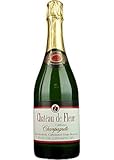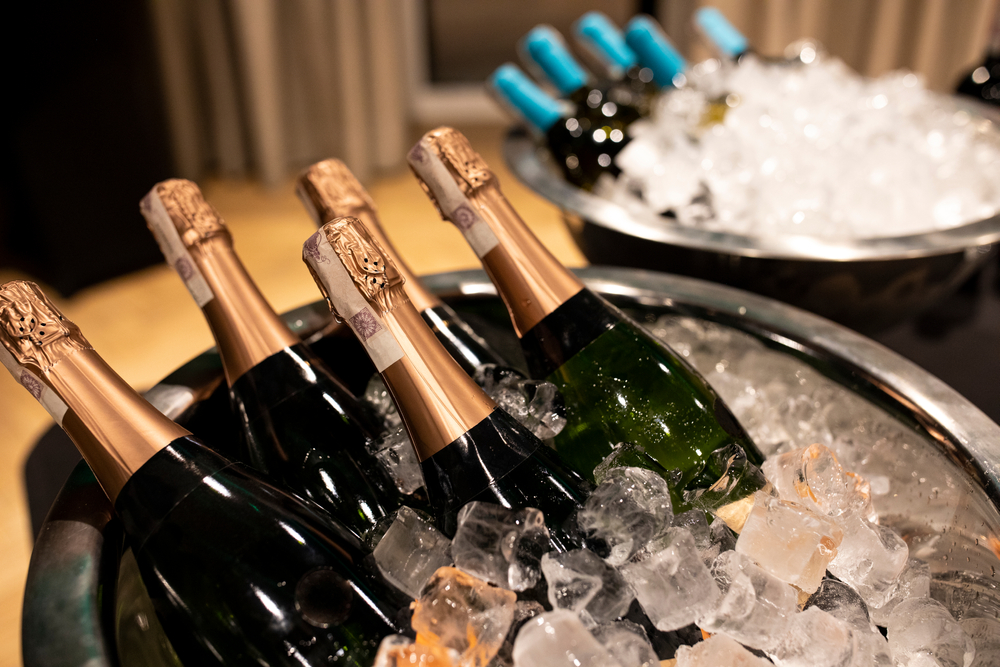Prosecco is a young Italian white bubbly wine that is great for special occasions. One might be tempted to call it a Champagne, but there are differences. Champagne is from a particular region of France, it uses Chardonnay, Pinot Noir, and Pinot Meunier grapes, and it adds yeast to the bottles for the bubbly. Prosecco is made in Italy from Glera grape and adds yeast to the tanks before bottling.
Prosecco is in its prime for about two years when unopened and stored correctly. Many wine connoisseurs recommend drinking prosecco within one year of its bottling date to ensure maximum freshness. Once opened, prosecco loses bubbly every hour and should be consumed the same day or sealed well and consumed within a month at most.
Read on to find out how to store prosecco, what factors contribute to its going bad, how you can tell if it did go bad, and some alternatives for your celebrations. Let’s dig in!
Contents
Does Prosecco have a Best-By Date?
Prosecco does have a best before date, and this time, you should pay attention to it. It’s all about the quality, and it’s discouraging to open a bottle of sparkling wine and find it flat. Check this date in the store as well if their stock is not as fresh as it should be. Purchasing a higher-quality prosecco
Does Prosecco Go Bad Over Time?
Prosecco is a young wine and not designed to be aged. The sugar to acid ratio is not suitable for aging. Prosecco will be stale and flat instead of getting better with time, as some wines. Light and heat are enemies to most alcoholic beverages. Prosecco is no different. Exposure to these elements will shorten the life of the product.
While some say that prosecco will still be good five days later when stored in the refrigerator with a sparkling wine stopper, it will not taste the same as when it is first opened. If you cannot drink it in one sitting, try to finish it the next day. There are different sizes of prosecco, so it’s best to buy the size you will drink in one sitting.
How Can You Tell if Prosecco Has Gone Bad?
The best way to tell whether your prosecco has gone bad is to open it and pour it.
- Prosecco will be flat in the bottle, or the bubbles will be gone when poured into the glass.
- Color changes can occur. If your prosecco is a yellow or brownish color when poured, something has gone wrong.
- A musty smell is also a sign of a bad bottle.
- Taste it to see if it’s light, bubbly, and fruity. It might develop a bitter or metallic taste.
How to Properly Store Prosecco
- Store in a cool, dark place. Light will alter the flavor, and warmth will spoil it as well. Suggested places are a wine cellar, garage, or basement, as long as they stay a steady temperature, ideally between 50- and 60-degrees Fahrenheit (10-15 degrees Celsius). A wine fridge is another option.
- Store it standing up. When the wine contacts the cork, the moist cork can let air in and spoil the prosecco.
- Chill prosecco in the refrigerator before you intend to enjoy it, but do not store it constantly in the refrigerator. Before opening, prosecco should be left in the fridge for no more than four days. Here are some reasons why:
A. The carbonation is altered by the vibration of the fridge’s motor, which will impact the taste.
B. Prosecco is exposed to light every time the fridge door is opened.
C. Cold temperatures may dislodge the cork and let air in. This will increase the carbonation before you are ready to drink. It also lets odors from other foods permeate the wine.
D. The cork may also become dry in the fridge, which will cause the wine to change flavor, aroma, and fruitiness. This will happen in as little as a week. - Once the bottle is opened, it will lose its bubbly rather quickly, so drink it in one sitting or use a wine stopper designed for sparkling wines and store it in the refrigerator for two to three days at the most.
Does Prosecco Go Bad After Opening?
Prosecco has a very short lifespan once opened. It is recommended that you drink an open bottle within three days, and even then, it needs to be sealed with a sparkling wine stopper and placed in the refrigerator. It will not taste the same as when it is first opened.
Some people drink what they wish the first sitting and then use the rest of it to make ice cubes, pancake syrup salad dressing, white wine sauce, wine cocktails, butter sauce, to make risotto, or even use it as a face mask (with yogurt and honey).
Can you Get Sick from Drinking Old Prosecco?
Old Prosecco will not make you sick, but it is not enjoyable to consume. The purpose of prosecco is a light, fruit, bubbly wine to enjoy on a special occasion (which is sometimes just making it through the day). Even when stored properly, prosecco will lose its bubbles after a period of time. It’s still acceptable to drink, but it’s not sparkling wine at that point. Purchasing a fresh bottle or drinking one that is a year old or less is worth it.
Alternatives to Prosecco
The alternatives to prosecco will depend on your local liquor store and what they carry. We will provide a few alternatives, but checking for the words Champagne, Prosecco, or sparkling wine are your best bets.
Moet and Chandon Champagne
We’ll start with the best option available. Champagne is a sparkling wine from the Champagne region of France. Any sparkling wine created outside of this region cannot use the Champagne name. Champagne uses Chardonnay, Pinot Noir, and Pinot Meunier grapes. It ranges in price from reasonably inexpensive to more expensive. Vintage champagnes are aged and last five to ten years. Non-vintage champagnes last three to four years.
Paul Mas Frisante Piquepoul Chardonnay
One of the best sparkling wines in the world and an alternative to Prosecco, Paul Mas is made in France. It has peach flavors and is a refreshing summer drink. Its price point lies somewhere between Champagne and Prosecco.
Fratelli Berlucchi Brut
A Brut sparkling wine made from Chardonnay grapes in Italy is an alternative to Prosecco from a different region. It tastes like a green apple mixed with lemon and a biscuity richness.
Progrigio Sparkling Wine
This low-cost prosecco combines the prosecco with pinot grigio for a refreshing alternative. It is floral and fruity. It can’t carry the prosecco label as it is not from Italy.
Leckford Estate Brut
Another option from the UK is the Leckford Estate Brut, an award-winning sparkling wine touted as an alternative to prosecco.
Martinelli’s Sparkling Apple Cider
 Look in your grocery store for a non-alcoholic sparkling juice alternative. Sparkling juices come in many flavors, including grape, apple cider, berries, and fruits. They are a great alternative on special occasions for the entire family.
Look in your grocery store for a non-alcoholic sparkling juice alternative. Sparkling juices come in many flavors, including grape, apple cider, berries, and fruits. They are a great alternative on special occasions for the entire family.
Crystal Canyon Sparkling Non-Alcoholic Champagne
 Made from white grapes and sugar, this sparkling juice is excellent for the entire family as well. It is certified Kosher for Passover celebrations as well. It gives you the bubbly and grape flavors without the fermentation.
Made from white grapes and sugar, this sparkling juice is excellent for the entire family as well. It is certified Kosher for Passover celebrations as well. It gives you the bubbly and grape flavors without the fermentation.
Chateau de Fleur Non-Alcoholic Sparkling Wine Champagne
 Made in California at a vineyard, it has apple, pear, and peach tastes. The taste appeals to a wide variety of people. Weibel vineyard makes a variety of traditional and sparkling wines, plus this non-alcoholic alternative.
Made in California at a vineyard, it has apple, pear, and peach tastes. The taste appeals to a wide variety of people. Weibel vineyard makes a variety of traditional and sparkling wines, plus this non-alcoholic alternative.
St. Regis Nosecco or Secco
A fruity and floral bubbly in the same taste notes as Prosecco. It is de-alcoholized with bubbles, hints of nutmeg, and delicate white bubbles. It’s made of a mixture of grapes and is less than .5% alcohol. It has 60 calories and goes well after dinner, with dessert or savory appetizers.
Related Questions
What dishes are Served Best with Prosecco?
Prosecco pairs best with summer fruits or cheese plates. The key is to balance the flavors of the wine and the dish, such as in Italian dishes or Indian curries. Of course, this is all a matter of preference.
What are the Different Types of Prosecco?
Prosecco comes in four varieties which are based on the sugar content. Brut has the least sugar content, then Extra Dry, Dry, and Demi-sec, which has the most sugar. The higher the sugar content, the more bubbles in the glass. If you see the term still prosecco, it will have no carbonation. Prosecco is served best in a tall, fluted glass, where the bubbles are contained and enjoyed.
Does Prosecco have Sulfites?
Sulfites are often added to wines to preserve and kill off bacteria and microbes. Some sulfites are also naturally occurring. Winemakers are not required to disclose whether they add extra sulfites. Those with a problem with sulfites can develop headaches, stomach pain, or digestive issues. Prosecco has some sulfites, and the amount will vary by the vintner. It is possible to find a low or no-sulfite prosecco or champagne.
